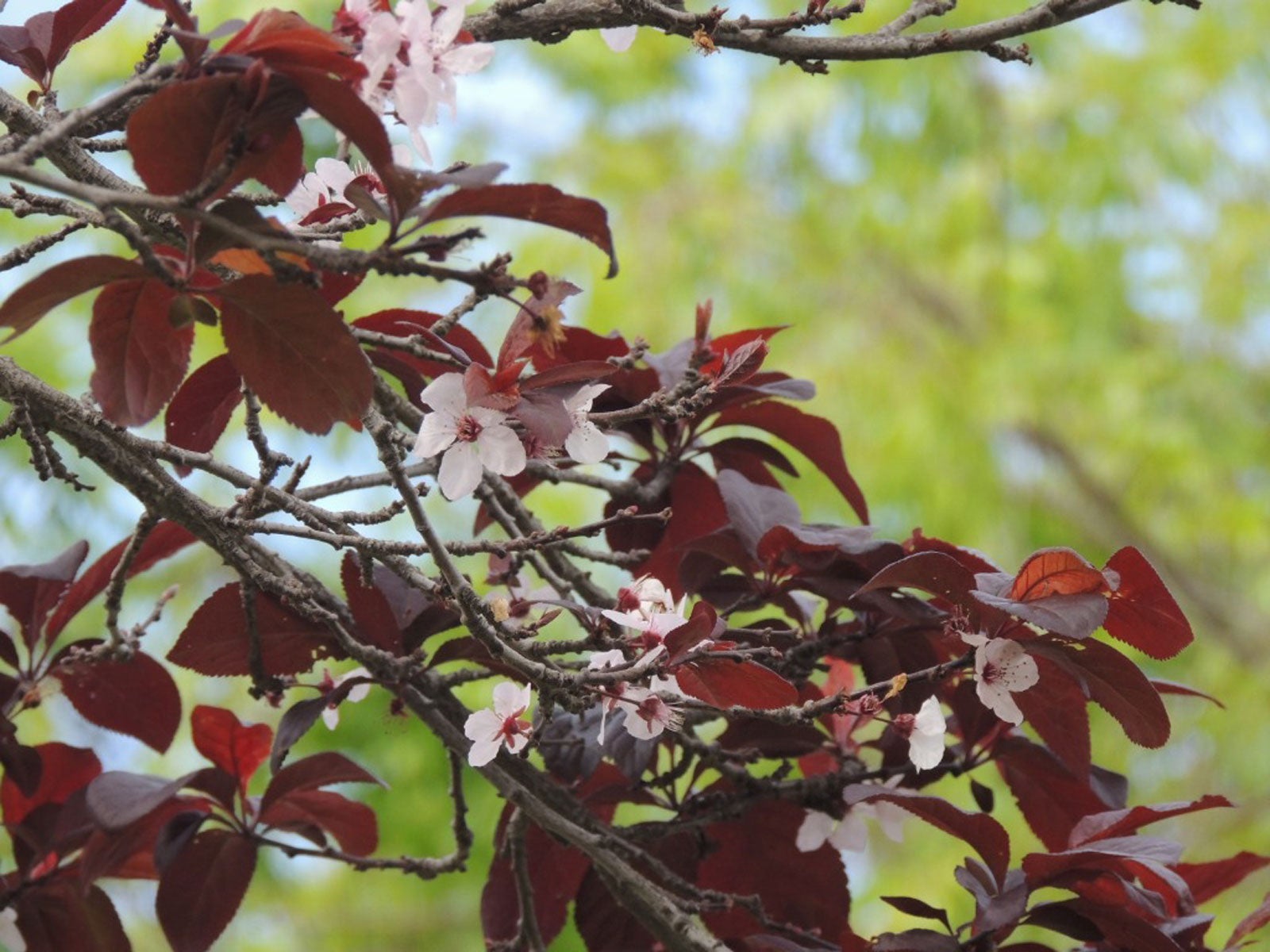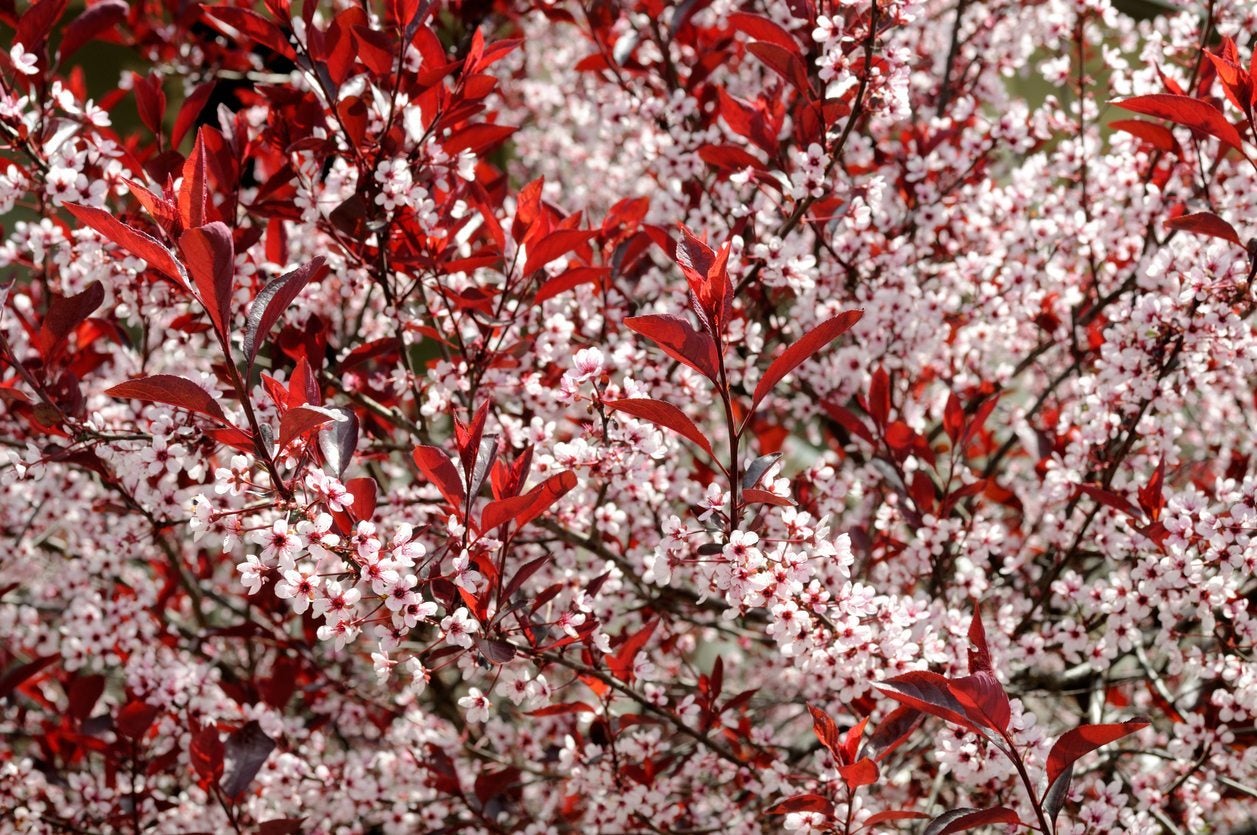Pruning Plum Leaf Sand Cherry: When And How To Prune A Purple Leaf Sand Cherry


Purple leaf sand cherry (Prunus x cistena) is a hardy shrub that belongs to the rose family. This striking plant, also known as plum leaf sand cherry, is valued for its reddish purple foliage and pale pink blooms. Purple leaf sand cherry care involves regular pruning. Read on for tips on how to prune a purple leaf sand cherry.
When to Prune Plum Leaf Sand Cherries
The best time to prune plum leaf sand cherries is just before new growth emerges in spring. This timing ensures the plant has plenty of time to recover and produce gorgeous blooms for the coming season.
Pruning Plum Leaf Sand Cherry
Purple leaf sand cherry pruning isn't complicated. Prune the oldest stems first, removing at least one-third of growth down to within a few inches (8 cm.) from the base. Additionally, cut damaged or dead growth at the base of the shrub. The branches will be sturdy, so be sure your cutting tool is sharp. When old and damaged growth has been removed, thin out wayward growth and branches that are rubbing or crossing other branches. If the plant looks a bit straggly, you can remove twigs to keep it tidy throughout the season. Be sure to make each cut about 1/4 inch (6 mm.) above a node or a point where one stem is growing from another. Lastly, snip off any suckers that form at the base of the plant. If the purple leaf sand cherry is badly overgrown or neglected, you can rejuvenate the plant by cutting it nearly to the ground in late winter, shortly before the plant emerges from dormancy. Rake the area under the shrub after pruning. If you are pruning to remove diseased growth, dispose of the clippings carefully. Never place diseased debris in the compost pile.
Additional Purple Leaf Sand Cherry Care
Water purple leaf sand cherry regularly during the first growing season. Usually, one watering per week is ample, or whenever the top 1 to 2 inches (2.5-5 cm.) of soil feels dry to the touch. Thereafter, water only during extended periods of hot, dry weather. One feeding every spring is sufficient for purple leaf sand cherry. Any balanced, general-purpose fertilizer is fine. Otherwise, plum leaf sand cherry is easy to get along with and requires little care. However, the plant is susceptible to a number of plant diseases such as:
A sunny location, well-drained soil and adequate air circulation around plants are the best ways to avoid these moisture-related diseases. Purple leaf sand cherry is also bothered by several pests, including:
Most insects can be controlled by blasting the affected leaves with a strong blast of water, or by spraying the foliage with insecticidal soap. Unfortunately, despite your best attempts, pests and disease may shorten the life span of purple leaf sand cherry.
Gardening tips, videos, info and more delivered right to your inbox!
Sign up for the Gardening Know How newsletter today and receive a free copy of our e-book "How to Grow Delicious Tomatoes".

A Credentialed Garden Writer, Mary H. Dyer was with Gardening Know How in the very beginning, publishing articles as early as 2007.
-
 Types Of Tomatoes Explained: Explore The Many Wonderful Shapes, Colors, Flavors, & Best Uses
Types Of Tomatoes Explained: Explore The Many Wonderful Shapes, Colors, Flavors, & Best UsesThe world of tomato varieties is vast and fascinating. Learn about the key types to grow in your garden, tailored to your preferences and space.
By Amy Grant
-
 Try The Trend – Turn Any Bed Into A Keyhole Garden With This Clever In-Ground Composter
Try The Trend – Turn Any Bed Into A Keyhole Garden With This Clever In-Ground ComposterKeyhole gardening is an efficient and sustainable practice that saves space. Get started on this DIY project quickly and easily with an in-ground composter.
By Bonnie L. Grant
-
 Propagating Sand Cherry Trees: How To Propagate A Sand Cherry
Propagating Sand Cherry Trees: How To Propagate A Sand CherryAlso known as Bessey cherry, propagating a sand cherry plant isn't a difficult task, and there are several effective ways to propagate sand cherry trees. Click this article to learn how to propagate a sand cherry for your garden.
By Mary H. Dyer
-
 Sand Cherry Plant Care: How To Grow A Purple Leaf Sand Cherry
Sand Cherry Plant Care: How To Grow A Purple Leaf Sand CherryPlum leaf sand cherry is an ornamental shrub or small tree that makes a great addition to landscapes. Click here for more information on growing this plant.
By Amy Grant